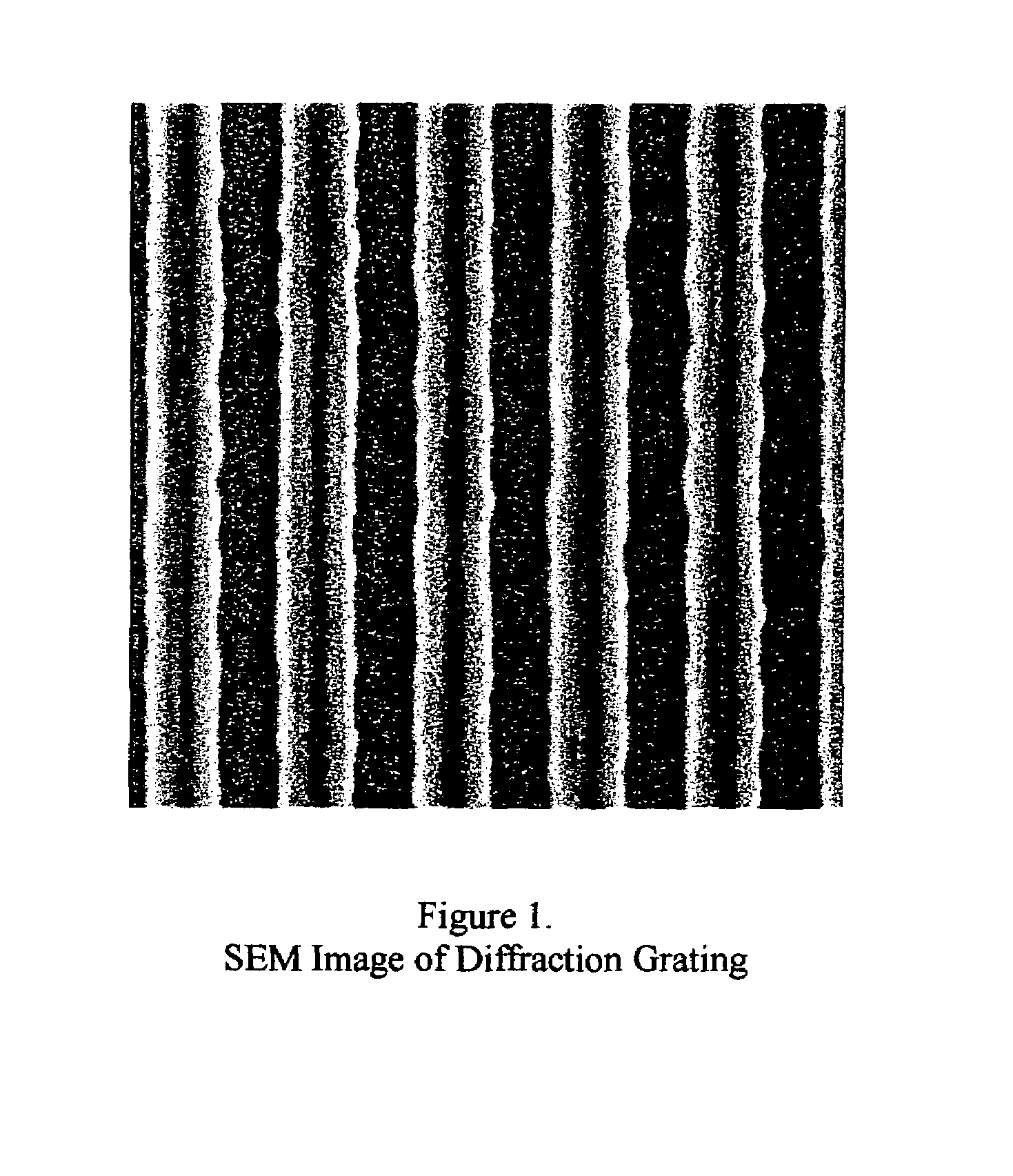Method of calibration of magnification of microscopes having different operational principles for bringing them into a single, absolute scale
a technology of optical measuring microscope and magnification, which is applied in the direction of optical elements, instruments, optical radiation measurement, etc., can solve the problems of not being able to calibrate optical measuring microscopes in such a wide range of sizes, difficult to solve problems, and reference samples are completely unsuitable for calibration
- Summary
- Abstract
- Description
- Claims
- Application Information
AI Technical Summary
Benefits of technology
Problems solved by technology
Method used
Image
Examples
Embodiment Construction
[0013]A method of calibration of magnification is illustrated for a measuring optical microscope or a scanning electron microscope or a probe microscope and is performed with the use of a diffraction grating (FIG. 1). The method includes first of all a measurement of a mean “optical” period T0 of the diffraction grating in a standard difractometric experiment, for example in accordance with the formula:
[0014]T0=mλsinθm
wherein m is an order of diffraction, λ is a wavelength of a used mono-chromatic radiation which is known with a high accuracy, and θm is an angle of diffraction measured in the experiment for the radiation which is diffracted in the m order.
[0015]Then scatter ω of individual values of periods of the test diffraction grating is determined. For this purpose multiple measurements of the period Ti with one of the known methods are performed. It is performed on images of different individual periods of the diffraction grating which are selected randomly, with their pos...
PUM
 Login to View More
Login to View More Abstract
Description
Claims
Application Information
 Login to View More
Login to View More - R&D
- Intellectual Property
- Life Sciences
- Materials
- Tech Scout
- Unparalleled Data Quality
- Higher Quality Content
- 60% Fewer Hallucinations
Browse by: Latest US Patents, China's latest patents, Technical Efficacy Thesaurus, Application Domain, Technology Topic, Popular Technical Reports.
© 2025 PatSnap. All rights reserved.Legal|Privacy policy|Modern Slavery Act Transparency Statement|Sitemap|About US| Contact US: help@patsnap.com



